Rubber molding manufacturing involves shaping raw rubber materials into functional products. Rubber molding is an operation in which raw melted rubber takes form inside a mold.
While some products can be made by other rubber shaping processes such as cell casting and extrusion, the molding process has its own features that set it apart. Read More…
RD Rubber Technology Corp is an ISO 9001:2015 / AS9100:2016 certified and ITAR registered company. We offer compression, transfer, injection and Liquid Injection molding, rubber to metal bonding, engineering support, tooling design, machining and more. Our customers rely on us to give them the best possible production solutions for rubber molding. From aerospace to medical, food processing to...

If you have a need custom rubber molding for products with a fast turnaround, Britech Industries is the company you need to call. We do molded, extruded and die cut rubber – of various products and in the colors and compounds you need.

With more than a century of manufacturing experience, Pierce-Roberts Rubber Co. is your source for custom molded rubber products.
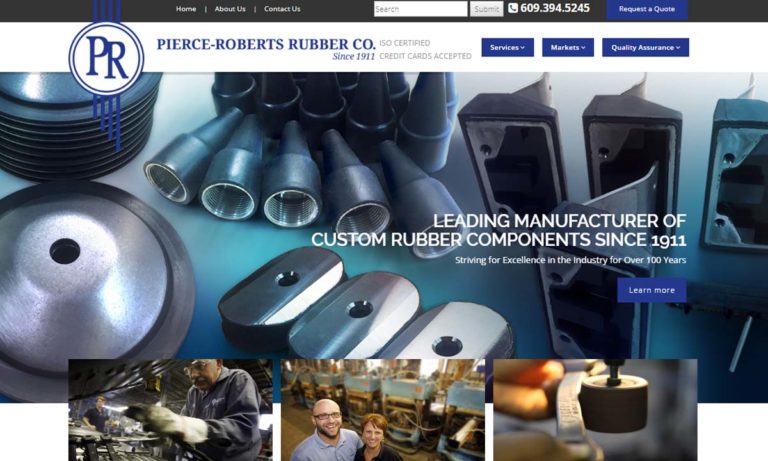
Rubber molding is what we do best. We believe in offering our very best to all customers no matter how large or small. For over 65 years we have pushed the boundaries of what we do and continue to improve our products and customer service every day.

REDCO Rubber Engineering & Development is your complete source for rubber molding products, including rubber rollers, die-cut gaskets, and custom rubber products to suit your application.

Mason Rubber is a full-service organization assisting in the designing or reverse engineering of custom product to fulfill your production requirements.

Kent Rubber Supply leverages our experience, innovation and continuous development to ensure our customers get the best products. We specialize in small to large batch production runs of molded rubber parts, allowing us to offer ultimate customization when it comes to a wide variety of specs. Our products vary in shapes, sizes and wall thicknesses in materials such as PVC and urethane. Both...

Spring-Fast Grommets with fusion bonded nylon & a polymer cushion prevent wire chafe & give you best in class performance, 49% install savings & a 9.5x efficiency improvement. The nylon clad metal substrate snaps on with finger pressure & self locks - eliminating adhesives & the old slow & costly gluing process. It is used widely used in across the OEM & contract manufacture sectors. ISO...
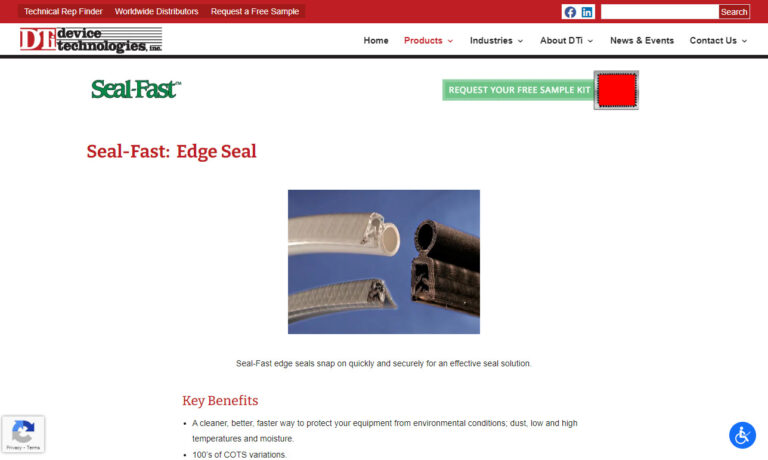
At Dynatect Ro-Lab, Inc., we pride ourselves on our expertise in rubber molding, offering a comprehensive range of solutions to meet diverse industrial needs. With a rich legacy in the field, we have honed our capabilities to excel in both large and small parts in either low- or high-volume.

Jet Rubber Company, employee-owned, offers custom molded rubber and rubber to metal components. They offer rubber molding in a wide array of standard rubber products as well as custom options for those more complex and difficult jobs.
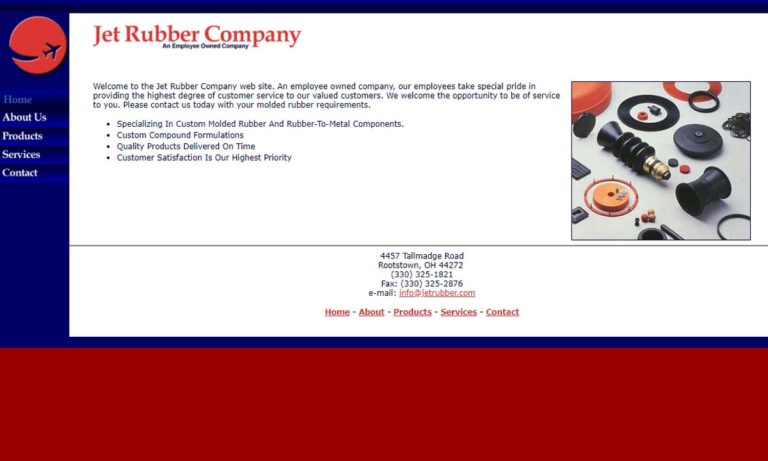
More Rubber Molding Companies
Products made through rubber molding are formed within a mold cavity rather than a die, allowing for the creation of intricate and irregular shapes.
Rubber Molding Applications
Molded rubber products play a crucial role in nearly every industry. From medicine and healthcare to electronics, aerospace, automotive manufacturing, and transportation, their applications are vast. They are also essential in sports and recreation, EMI shielding, and sound management.
The rubber molding process is the cornerstone of countless products, renowned for its precise and reliable results. Rubber molded components can be tailored to seamlessly integrate with any equipment, ensuring leak-free performance. Moreover, the advent and versatility of synthetic rubber have broadened its applications across various industries, including healthcare. This innovation allows for safer alternatives, such as materials suitable for individuals with latex allergies, and silicone tubing that safely carries intravenous fluids, mitigating the risk of allergic reactions.
Products Produced from Rubber Molding
A variety of intricate rubber products are crafted through this process. Notable examples include components for oil and gas, fluid pumps, rubber diaphragms, custom buttons, vibration absorbers and isolators, rubber seals, grommets, washers, bushings, cable boots, EMI shielding products, surgical instrument parts, blood analysis machine components, keypads, electrical connector inserts, and rubber sheets.
Rubber Grommets
Rubber grommets serve as versatile components widely utilized across industrial, consumer, and commercial applications. Designed to encircle a hole in a surface, they safeguard wires or other hardware that pass through, while also protecting the hole from wear and damage. These grommets can be found ensuring wires stay securely connected, or neatly aligning desk holes for the safe passage of computer cables.
Rubber Washers and Rubber Bushings
Given the potential for excessive vibrations in many manufacturing machines due to their moving parts, rubber washers and bushings are installed to stabilize these components and absorb the vibrations, thereby ensuring the safety of the operators.
Rubber Sheet
A rubber sheet, when placed beneath a machine, acts as a substantial, thick barrier that diminishes vibrations and noise. This reduction significantly enhances both safety and working conditions.
History of Rubber Molding
Natural rubber’s use dates back millennia, with evidence suggesting South American tribes have utilized rubber tree sap to craft household items for thousands of years. Additionally, the Mayans are believed to have employed rubber as early as 1600 BC. However, the molding of rubber became practical only after the advent of vulcanization. This scientific breakthrough enabled the processing of rubber without degradation, revolutionizing its applications.
Before the advent of vulcanization, early attempts with rubber proved largely futile. The story starts in 1823, when Scottish chemist Charles Macintosh stumbled upon a breakthrough: blending rubber with a coal-tar derivative to bond it to fabric. This discovery rapidly popularized rubber products throughout Europe and the United States. However, users soon encountered persistent issues: aside from erasers and shoe soles, rubber frequently decayed swiftly, emitted unpleasant odors, and turned sticky in warm temperatures.
In 1839, the trajectory shifted when American innovator Charles Goodyear mastered the art of rubber vulcanization. By introducing sulfur to latex rubber, he stabilized the polymers, transforming rubber into a resilient material. His patent for this revolutionary process was granted in 1844. Despite its initial slow uptake, vulcanization gained momentum after 1889, spurred by the manufacture of rubber bicycle and automobile tires. By the early 1900s, global demand for rubber surged, prompting advancements in synthetic rubber compounds. Today, natural rubber accounts for less than half of all rubber produced worldwide.
In 1872, brothers Isaiah and John Hyatt secured a patent for the pioneering rubber injection molding machine. Throughout the late 19th and 20th centuries, subsequent innovators refined and enhanced this initial technology. Concurrently, advancements in synthetic rubber formulations, such as liquid silicone developed by chemists, spurred engineers to devise novel molding techniques. Notably, in the 1970s, James Watson Hendry introduced the gas-powered injection molding machine, revolutionizing manufacturing capabilities by markedly boosting production yields.
Since the late 20th and early 21st centuries, automation has revolutionized rubber molding. Modern advancements blend CNC technology with CAD programming, enabling the rubber industry to efficiently produce large quantities of bespoke molded rubber products.
Rubber Molding Materials Process
Various types of rubber, ranging from natural rubber to synthetic variants like neoprene, foam rubber, EPDM, silicone rubber, and liquid silicone rubber, offer a wide array of molding possibilities. Synthetic rubbers not only share positive attributes with natural rubber but also possess distinct characteristics. They can be engineered to resist corrosion, withstand high temperatures and ozone exposure, remain inert to specific chemicals, and exhibit diverse properties such as rigidity, flexibility, durability, and strength.
Natural Rubber
Natural rubber originates from the sap of specific trees, notably those within the Ficus genera. However, it is predominantly extracted from the Pará rubber tree (Hevea brasiliensis). Agricultural workers obtain the sap by tapping into the tree, akin to harvesting maple syrup from maple trees. Producers subsequently mix the sap with formic acid to induce coagulation. This raw rubber material contains latex, which may trigger allergic reactions, prompting some manufacturers to avoid its use.
Neoprene
Neoprene, the pioneering synthetic rubber manufactured at scale by DuPont in the 1930s, consists of a versatile chloroprene polymer. It is widely utilized by manufacturers for shaping liners, gaskets, and an array of household and gardening items. However, neoprene products are vulnerable to deterioration when exposed to chemicals such as acetic acid, turpentine, and iodine.
Foam Rubber
Foam rubber undergoes manufacturing with foaming agents, rendering it both flexible and air-filled. While it can be derived from various rubbers, polyurethane is the most common source. This material boasts impressive resilience—it can be twisted, scrunched, stretched, pushed, or pulled without damage. There are two primary variants: open cell and closed cell. Open cell foam features interconnected pores, promoting breathability and a softer feel. In contrast, closed cell foam presents isolated pores, enhancing its density by accommodating more pores within a given space. Think of it like this: open cell foam welcomes interaction with others through its connected pores, while closed cell foam prefers solitude, packing its pores closely together for greater density.
Open cell foam rubber finds its applications in crafting automobile trim, seat padding, pillows, and mattresses, as well as serving as packaging padding and for noise control. Conversely, closed cell foam rubber is employed in manufacturing thick automotive products, insulation, thermal management items, and protective gear such as elbow pads, knee pads, gloves, wetsuits, surgical scrubbers, x-ray positioning pads, and orthopedic braces.
EPDM
EPDM, short for ethylene propylene diene monomer, boasts a range of exceptional qualities. It demonstrates remarkable resilience against steam, ozone, heat, and harsh weather conditions. Moreover, it offers superior electrical insulation. EPDM finds widespread application in automotive manufacturing, such as in electrical gaskets and door seals, as well as in building construction for roofing materials. Additionally, it plays a crucial role in the fabrication of engine cooling system hoses.
Elastomers
Elastomers stand tall among polymers in industry, revered for their versatility across countless applications. These materials boast a unique duality: elasticity and viscosity, earning them the moniker of viscoelastic polymers. Among them, silicone rubber shines as a standout performer. Renowned for its exceptional qualities like high-temperature endurance and remarkable flexibility, silicone rubber remains a pinnacle of high-performance elastomers.
Silicone Rubber
Silicone rubber, a synthetic compound composed of silicon, oxygen, carbon, and hydrogen, is available in both liquid and solid states. Solid silicone rubber stands out for its ease of sanitization, which has made it a favored choice in industries such as food processing, medicine, and biotechnology. Its molecular structure invariably includes an organic component linked to silicon and a siloxane backbone (a chain of alternating silicon and oxygen atoms). Both liquid and solid forms exhibit remarkable heat resistance, remaining stable even at temperatures up to 446℉. This thermal durability makes silicone rubber particularly suitable for applications like metal casting. However, it exhibits poor resistance to fuels and mineral oils. For applications involving these substances, fluorosilicone rubber serves as a viable alternative.
Silicone rubber starts off as a highly adhesive gel or liquid in its uncured state. To transform it into a solid form, it undergoes curing, vulcanization, or catalyzation. Typically, during manufacturing, this process occurs in two stages to achieve precise shaping, followed by an extended post-curing phase. Injection molding is another common application method for silicone rubber.
Silicone rubber, ubiquitous in both industries and households, permeates our daily routines. This versatile material, known for its elasticity, finds myriad applications—from muffin pans and pot holders to medical devices, jewelry components, and beyond. Silicone molds, crafted from RTV (Room Temperature Vulcanizing) silicone, undergo a chemical fusion of components triggering vulcanization. This process yields a non-stick, resilient, and pliable material, tailored to diverse molding needs across various sectors.
Properties of Silicone Rubber Molds
Silicone molds boast heat resistance, maintaining integrity at temperatures up to 302 °F without compromise. They excel in thermal and thermo-oxidative durability, offering reliable performance across a broad spectrum of operating temperatures.
They can withstand extreme cold, staying flexible and elastic even in temperatures as low as -76 °F to -94 °F due to their low glass transition temperature.
Silicone rubber, though flammable in its natural state, transforms into a flame-retardant and self-extinguishing material when supplemented with flame retardants.
- Silicone rubber boasts exceptional resilience against electrical discharge, maintaining stability even under high temperatures and frequencies.
Other distinctive characteristics include: their hydrophobic nature, their capacity to effortlessly detach materials from their surface, and outstanding protection from oxygen, ozone, and sunlight. They also have the capability to endure electromagnetic and particle radiation effortlessly, including UV rays, alpha and beta particles, and gamma rays, and exceptional non-stick and non-adhesive properties. They have reduced toxicity, clarity in optics, superb thermal insulation properties, a subdued response, exquisite compatibility with biological systems, and exceptional mechanical attributes.
How is Silicone Rubber made?
- Silicon atoms tightly bound within the silica compound must undergo separation to form silicone.
- Enormous quantities of quartz sand undergo heating at incredibly high temperatures, often reaching up to 3272 F°, to accomplish this task.
- Afterward, the silicone undergoes heating and multiple steps of mixing with methyl chloride. The resulting product, polydimethylsiloxane, undergoes polymerization and is subsequently distilled, making the polymerization of polydimethylsiloxane achievable.
- Various methods are employed to achieve this, tailored to the specific application of the end product. The catalyst is blended with necessary additives, such as pigments and the base silicone compound. Subsequently, it undergoes either extrusion or injection molding. The concluding stage of the manufacturing process involves curing.
Applications of Silicone Rubber
Here are several ways silicone rubber finds its place in industry:
- Aerospace – components of a space suit
- Automotive – gaskets and seals
- Construction – coatings and sealants
- Electrical and electronics – adhesives and encapsulants
- Food processing – food molds
- Medical – medical instrument components such as seals, tubes, and valves
- Recreation – goggles and mouthpieces
Rubber Molding Process Details
1. Outline the specifications for the product to be molded, including the choice of material, precise dimensions, desired shape, and the required thickness.
2. Create the die or mold cavity that will shape the raw rubber, often referred to as stock.
3. Collect the stock.
4. Insert the stock into your chosen machine.
5. Let it cool and solidify.
6. Remove the rubbery form.
7. Complete any final touches required.
After the mold is removed, imperfections like seams might appear. In such instances, additional processing of the rubber product may be required. To enhance its aesthetic appeal, various finishes and textures can be incorporated into the final product.
Rubber Molding Design
Manufacturers begin by envisioning the desired appearance, essential qualities, and dimensions of the part before selecting an appropriate rubber material. Once chosen, they employ computer programming to meticulously craft a precise design.
Custom rubber molding, particularly custom rubber injection molding, remains highly favored among customers. Despite being more expensive than standard molding, custom molding proves more economical than alternative rubber manufacturing methods. With custom mold design, you gain the ability to create unique shapes, finishes, textures, tolerances, and dimensions tailored specifically to your application.
Rubber Molding Variations and Similar Processes
Rubber molding encompasses various techniques: injection molding, liquid injection molding, insert molding, compression molding, transfer molding, and blow molding. Although these methods share similarities, injection molding stands out as the most widely adopted. An alternative to these methods is rubber extrusion.
Injection Molding
In the initial stage of the injection molding process, raw rubber material, referred to as stock, is gathered and deposited into a hopper positioned above a conveyance channel. From there, the stock is dispensed and guided through a channel equipped with a sizable rotating screw. As the stock progresses along the channel, it undergoes complete melting, facilitated by both internal heating elements and the friction generated by the screw’s rotation. At the channel’s terminus lies a mold cavity eagerly awaiting the infusion of molten rubber. Here, heat and pressure join forces, coaxing the liquid rubber to flow and conform meticulously to every curve and crevice of the mold. As the molten rubber cools and solidifies within the mold, it transforms into a form ready for extraction, securely holding the shape impressed upon it.
- The injection molding process stands out for its ubiquitous application, resilience, and intricate nature, owing to the diverse sizes and uses of its products.
- Material flows into mold cavities through plungers in mold halves.
- This method stands out due to its superior output efficiency, automation capabilities, and swift molding cycles.
- Materials from diverse sources can be simultaneously utilized without requiring any trimming of the product.
- Issues such as trapped air bubbles, flash, and sinks can be effectively mitigated through proper venting techniques.
- Thin-walled products benefit most from it, making it ideal for crafting small parts and automobile body panels.
Liquid Injection Molding
Liquid injection molding closely resembles traditional injection molding, distinguished primarily by the use of liquid raw materials. Unlike solid pellets, manufacturers employ liquid stock as the initial material. The process involves specialized machinery equipped with a metered pump to precisely regulate the flow of stock. This pump dispenses the liquid, allowing manufacturers to blend it with additives as needed. Once blended, a nozzle injects the mixture into a carefully shaped mold. Manufacturers then seal the mold tightly with clamps and apply precise heat and pressure to form the product. Liquid injection molding of rubber allows for rapid production without the need to liquefy stock, and resulting products often require minimal finishing.
- Liquid injection molding involves injecting liquid materials into cavities where they solidify to form products.
- Initially, raw materials are mechanically mixed, and once the product solidifies, it is ejected from the mold cavity.
- It involves a rigorous, time-efficient process ideal for crafting intricate designs with meticulous accuracy.
- This technique excels in mass production, utilizing thermal imaging technology to detect potential errors swiftly.
- It excels in fabricating gaskets, o-rings, keypads, and electronic contacts with unparalleled precision.
Insert Molding
Insert molding combines the flexibility of rubber and plastic injection molding by encapsulating non-rubber components, known as inserts, within molded rubber parts. This process is often used for creating items like knife blades and surgical tubes.
Compression Molding
Compression molded parts are crafted through a meticulous process: first, the manufacturer precisely weighs, measures, and preheats the raw material. Next, they insert it into a pre-formed mold cavity. The mold is then sealed shut, applying intense pressure to compress and shape the material, molding it into the desired form. Once set, the material is allowed to solidify and cool within the mold before being carefully extracted. After compression molding, excess material (flash) is typically removed through secondary processing. Rubber compression molding enables manufacturers to inexpensively create large, intricate products, although achieving consistent results can be challenging.
- Rubber preform is inserted into heated cavities where it conforms to create molds.
- The raw material may come as pre-measured pellets, granules, or powder.
- The cavities are sealed using heated plungers and subjected to pressures ranging from 15,000 to 20,000 psi.
- This cost-effective method operates at a moderate production rate.
- Ensure thorough cleaning of the cavities to prevent contamination.
- This process yields seals, o-rings, gaskets, automotive parts, and cushioning pads.
Transfer Molding
During transfer molding, manufacturers begin with a carefully measured rubber stock, known as a “preform,” which is placed into a cavity above the mold, called a “pot.” Using a heavy mechanical ram and heat, they press the preform, forcing it through a runner and gate system into the mold where it melts. The ram remains in position until the preform conforms completely to the mold’s shape. This method is prized for its ability to produce accurately molded rubber items and to bond rubber to metal surfaces seamlessly.
The plunger deposits the material into the heated cavity, which is subsequently cooled to conform to the mold’s shape.
- Waste resulting from mold compression is then manually trimmed, followed by cryogenic treatment, tumbling, or precision grinding.
- It boasts a condensed production timeline and stricter dimensional precision.
- This method excels in crafting diminutive, intricate, and highly detailed components.
Blow Molding
Rubber blow molding shapes hollow rubber products through a precise process. Initially, a parison (a tube-like plastic shape with a hole) or preform is used. The parison is clamped to a mold, into which compressed air is then blown through its hole. This inflation causes the rubber to expand and conform to the mold’s shape. Once cooled and solidified, the mold is opened to release the newly formed part.
Liquid Silicone Rubber (LSR)
Liquid silicone rubber is a low viscosity, high purity thermoset elastomer that maintains its mechanical qualities throughout a wide temperature range, i.e., from -58 °F to 482 °F. This heat-cured elastomer is a great option if you want outstanding optical clarity and long-term endurance in a demanding environment (with high temperatures, UV exposure, etc.).
Injection molding stands alone as the sole method for creating liquid silicone rubber, undergoing heat-curing during the molding process. The foremost advantage of LSR lies in its capability to amalgamate multiple components into a single unit, facilitating substantial cost reductions. Moreover, liquid silicone rubber enables heightened production efficiency through the use of compact equipment and the elimination of material wastage.
Rubber Extrusion
Rubber components can also be manufactured using rubber extrusion as an alternative method. However, extrusion machines are somewhat constrained in their capabilities. Unlike molding processes that offer control over three axes through a cavity rather than a die, extruders are typically limited to the X and Y axes. This makes them better suited for producing simpler rubber items like baseboards or sheets.
Extrusion of Raw Material
- Extrusion involves shaping uncured raw material using a dye to form a consistent cross-sectional product.
- The raw material passes through an extruder equipped with screws to control temperature and rotation, facilitating the shaping process.
- After molding the product into its desired form, it undergoes a washing and cooling process using air or water before being precisely cut into its final shape.
- This efficient extrusion method is cost-effective, time-efficient, and allows for the mass production of goods.
- Maintaining tolerance criteria proves challenging, while per-part pricing fluctuates with the dye’s complexity.
- Ideal for crafting gaskets, tubing, and seals, it excels in production.
Product Calendering
- It involves a rapid and continuous process where several rollers compress the semi-liquid material into a solid sheet.
- Afterwards, these sheets are applied onto fabrics.
- Setting an ideal temperature for rollers is crucial to prevent overheating and adhesion issues.
- Additionally, product creeping is a notable concern during calendering processes.
- It serves to produce precise dye sheet cuts and thin material sheets.
Benefits of Rubber Molding
Rubber molding presents numerous advantages, particularly in contrast to alternative rubber forming methods. Initially, its versatility shines through: manufacturers harness a diverse array of rubber-based raw materials, facilitating the creation of intricate custom parts. Additionally, rubber molding excels in efficiency, significantly cutting down production timelines, making it particularly suited for large volume operations.
Choosing a Rubber Molding Manufacturer
When choosing a rubber molding service provider, you should think about these factors: What is the intended application? What specific qualities are essential for my molded product, such as tensile strength, corrosion resistance, flexibility, and temperature resistance? Are there industry or regional standards that must be met? How much customization is necessary for my project? What quantity of items do I need? What budget and timeline constraints do I have?
By understanding these answers, you can 1) identify the specific product and service offerings to focus on during your research, and 2) engage in more effective discussions with potential manufacturers. We recognize the abundance of manufacturers and suppliers in the market, varying in quality. To assist you in navigating this landscape, we’ve compiled a comprehensive list of reputable manufacturers you can rely on. Explore their profiles to gain deeper insights into each. Select three or four that pique your interest the most, and reach out to them with your specific requirements. Initiate meaningful conversations about production, compare their responses afterward, and choose the provider whose services, including customer support, best meet your needs. Contact them again to kick-start your project!
Check out our Polyurethane Molding website



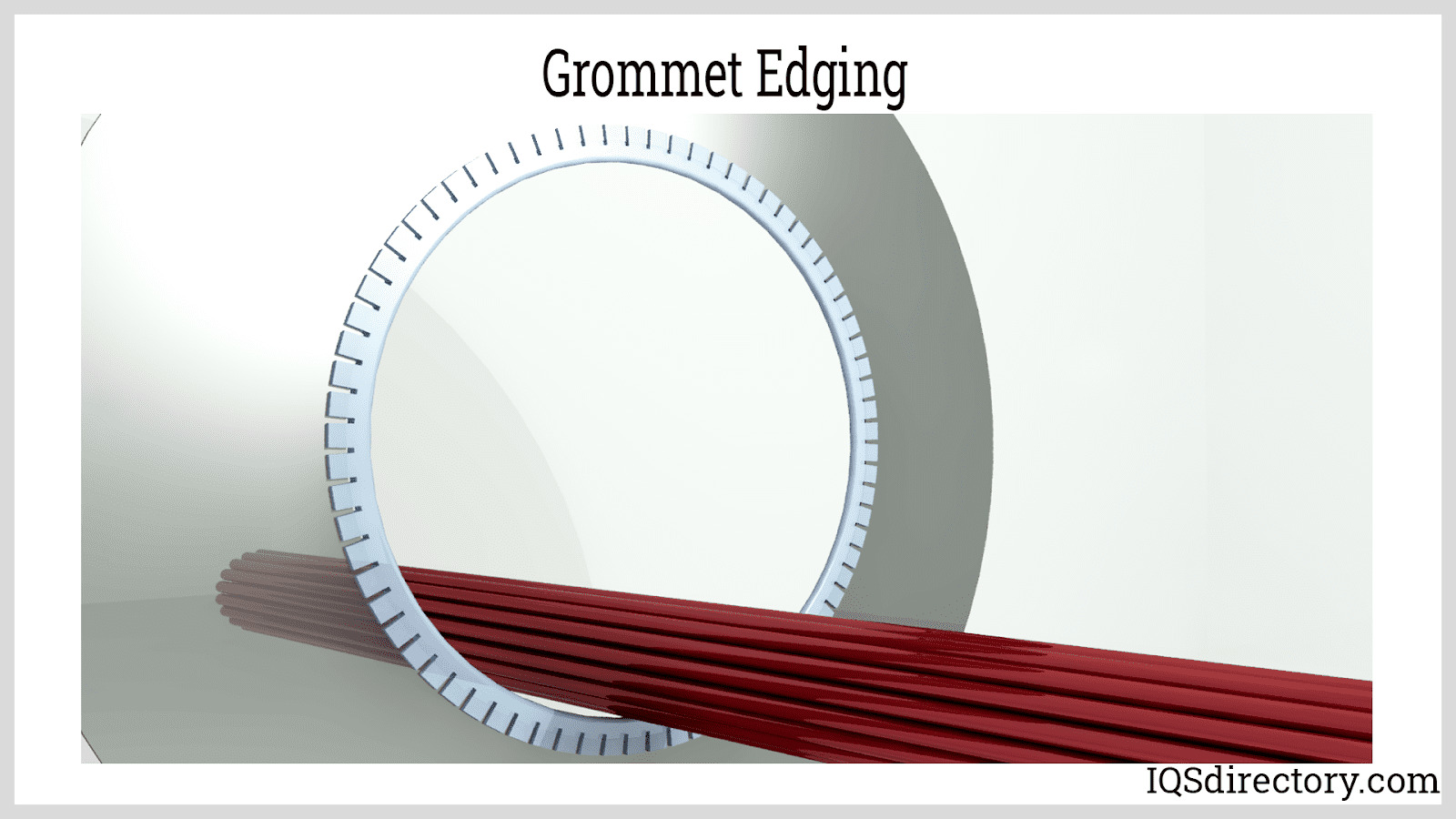

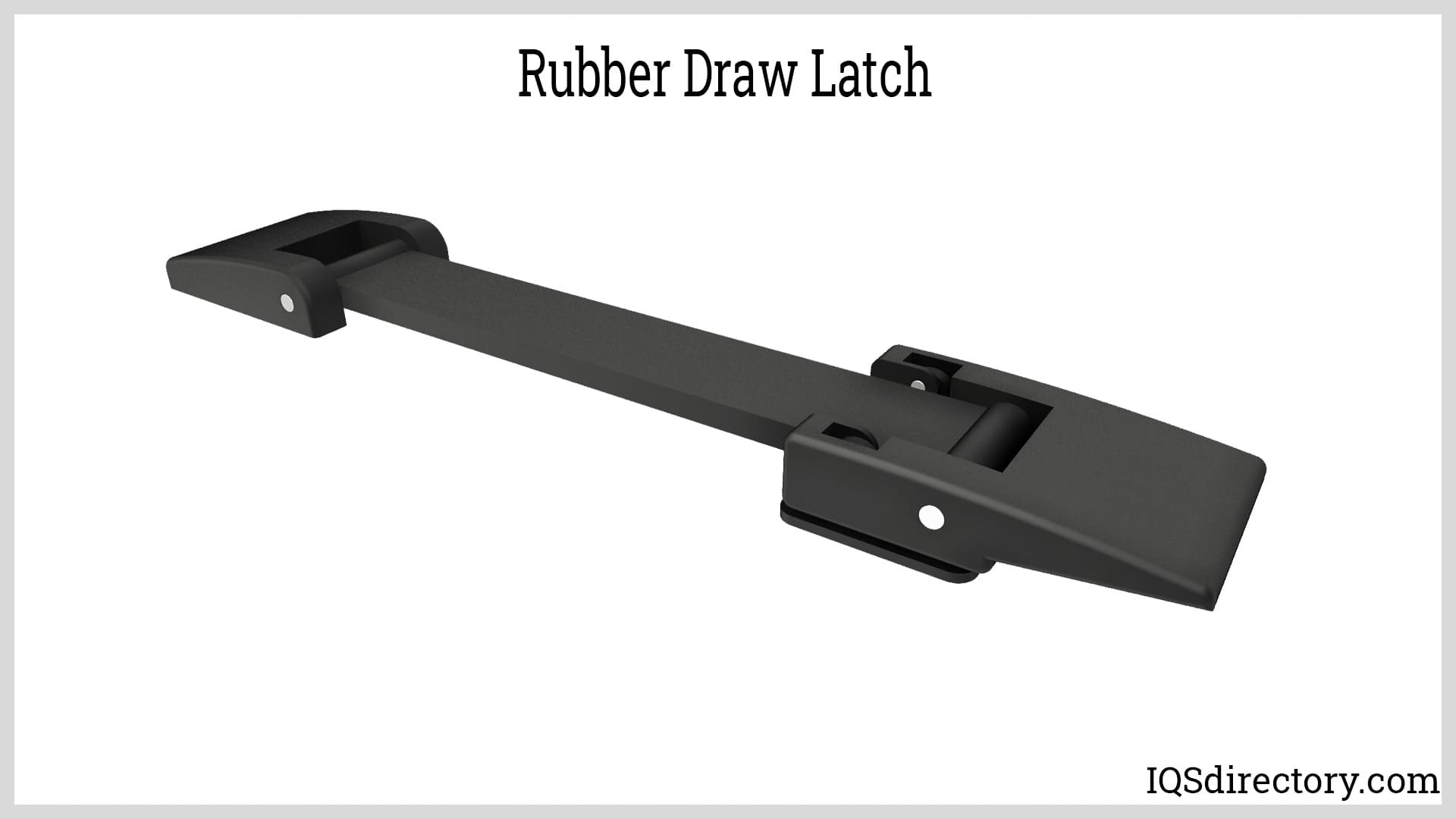
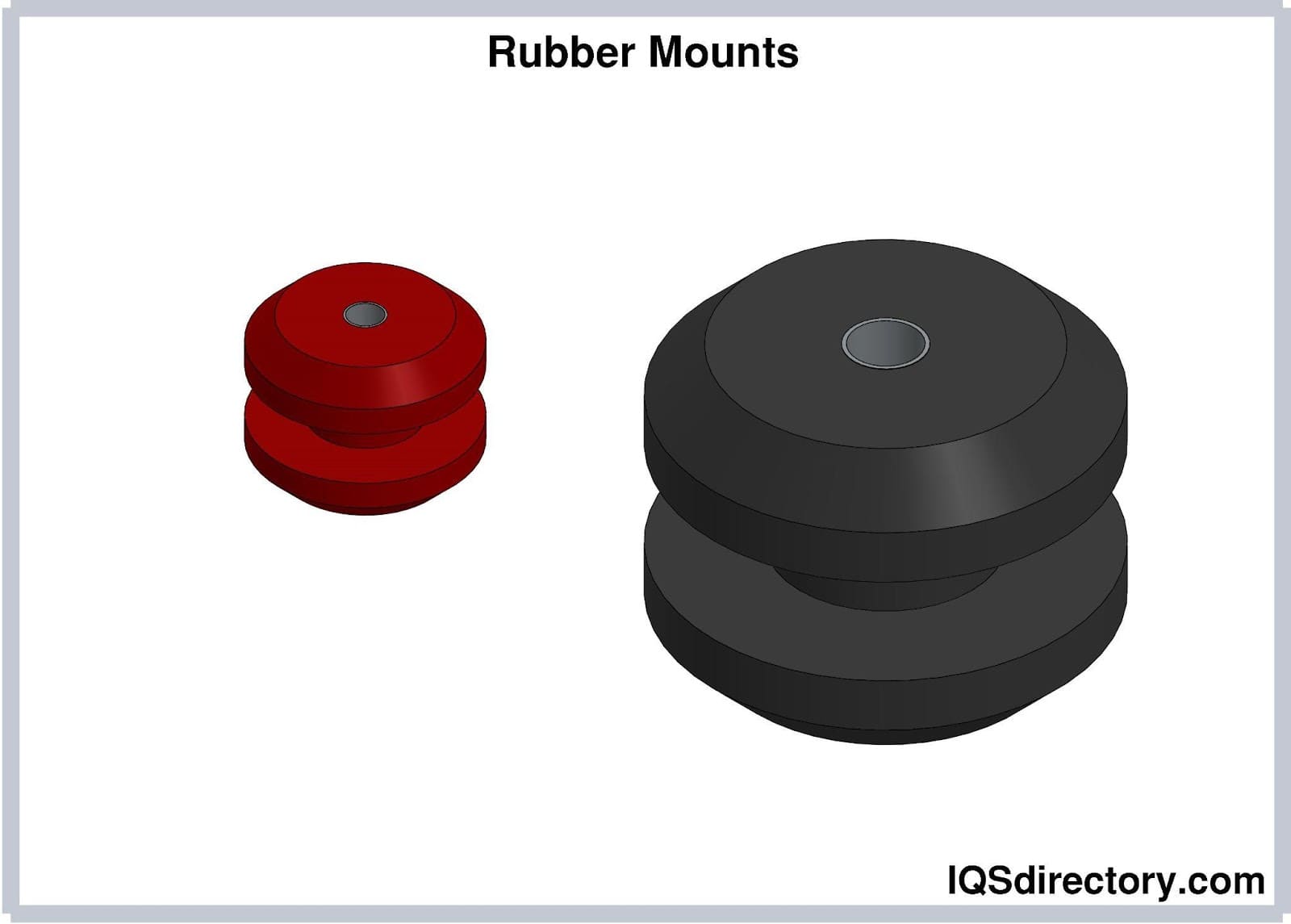




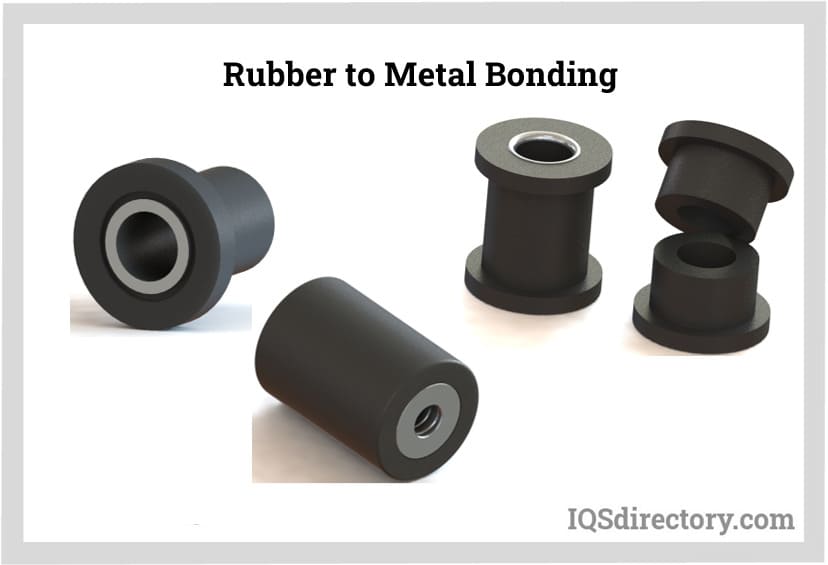
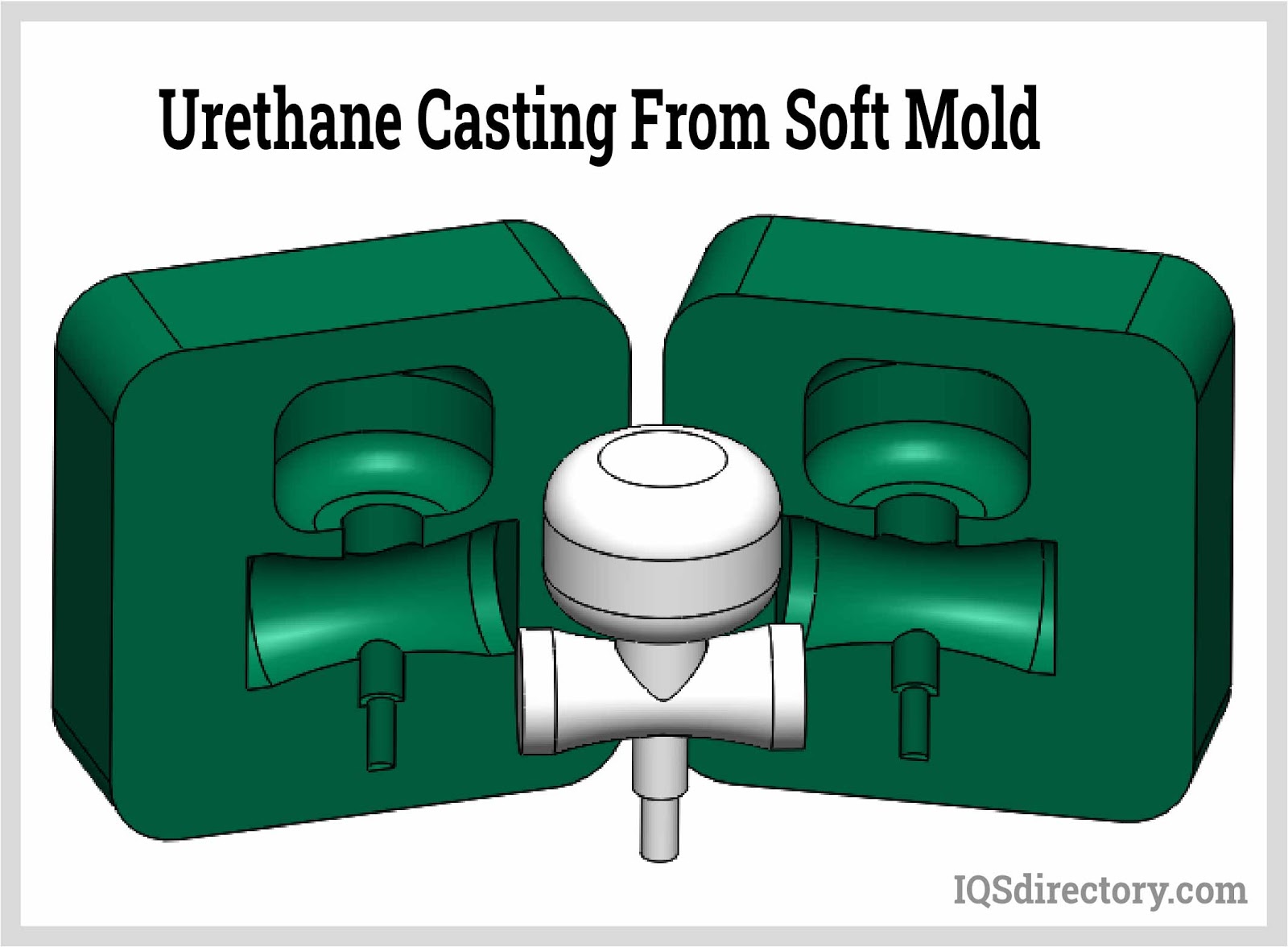
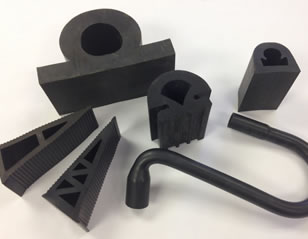 Rubber Extrusions
Rubber Extrusions Rubber Molding
Rubber Molding Rubber to Metal Bonding
Rubber to Metal Bonding Rubber Tubing
Rubber Tubing Vibration Absorbers
Vibration Absorbers Castings & Forgings
Castings & Forgings Bulk Material Handling
Bulk Material Handling Electrical & Electronic Components
Electrical & Electronic Components Flow Instrumentation
Flow Instrumentation Hardware
Hardware Material Handling Equipment
Material Handling Equipment Metal Cutting Services
Metal Cutting Services Metal Forming Services
Metal Forming Services Metal Suppliers
Metal Suppliers Motion Control Products
Motion Control Products Plant & Facility Equipment
Plant & Facility Equipment Plant & Facility Supplies
Plant & Facility Supplies Plastic Molding Processes
Plastic Molding Processes Pumps & Valves
Pumps & Valves Recycling Equipment
Recycling Equipment Rubber Products & Services
Rubber Products & Services